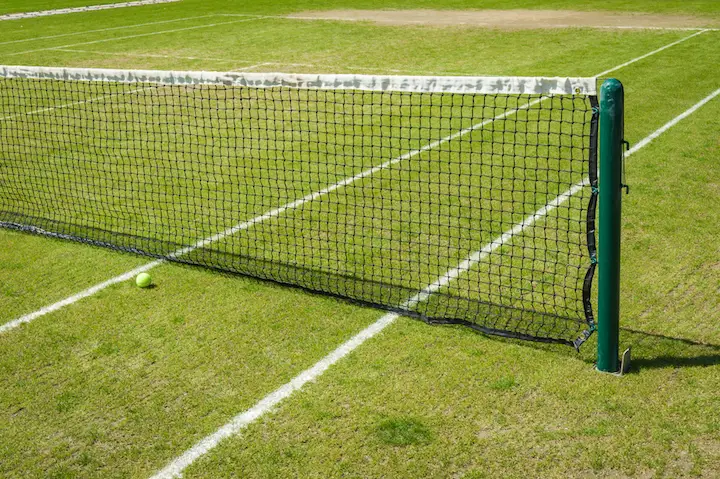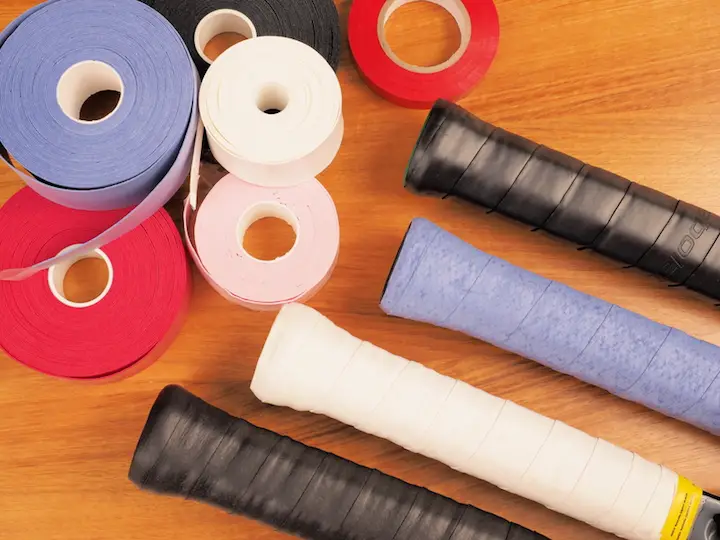Your Guide
 Gavin Davison
Gavin Davison
There are a few phrases and terms in tennis that can cause a fair bit of confusion for those that don’t play, or those that are quite new to the sport.
One of these terms is ‘let’, which you will likely hear an umpire call out at various times in the match. I

n the most general sense, a let means that a particular action or point needs to be replayed.
For example, you might hear the umpire call let when a player hits a serve and it hits the top of the net, and you can also hear a let call if a point needs to be replayed due to a disruption.
So there you have it – your overview of what the mythical ‘let’ means in tennis.
However, to truly understand the scenarios where a let can be called and to comprehend what this leads to, you need a more in-depth description. This you will find below.
The Different Let Scenarios
In my many years of playing tennis, there are only two scenarios (well, three if you count a second serve let) where a let will be called out by an umpire. I’ve detailed these for you right here.
The Service Let
As many of you will know, in order to kick off a point in tennis, someone needs to serve.
This gets the ball rolling, and while the server is obviously trying to aim their serve in the box that is diagonally opposite, there is still an obstacle in the way – THE NET.
Now, a let can then occur if the server hits the ball towards the box and it hits the white tape on the top of the net.
Funnily enough, this white tape is called the net tape, which is why some people confuse the calling out of ‘let’ with ‘net’.
Technically speaking, once the ball has struck to the top of the net, the serve is considered to be a let.
This is also why you’ll hear the umpire call out ‘let’ as soon as the ball has brushed across the white tape.
However, the Story of the Service Let Doesn’t End There.
On top of this, the ball then needs to land into the service box for the umpire to call out, ‘let, first/second serve’.
If the ball doesn’t land in the box, then you’ll hear the umpire call a let, but then the next call you will hear is ‘fault’ – usually from one of the line judges.
Interestingly, there are no limits as to how many times you may serve a let, which can get quite comical should a player hit the net a FEW TIMES in a row.
For those who are interested, Serena Williams actually holds the let record for serving, with four in a row recorded back in 2013.
The Replay the Point Let
The second scenario in which a let can be called is far less frequent, but it creates a ‘let call’ nonetheless.
Basically, when two or four players are playing a point and something happens that hinders the point, the umpire is within their rights to call a let for the point to be replayed.
The various scenarios which can cause this to happen are endless, but some that happen more frequently include a ball rolling onto the court by mistake or the wind blowing some equipment onto the court – usually from the player’s bag or chair.
This situation can often cause a bit of controversy should one player, or two in doubles, be well up in the point and looking likely to win it. This is true at every single level, trust me, I’ve been on the receiving end a fair few times.
Interesting let situations
Now that I’ve run through the two main situations in which a let can be called, I figured we’d have a little fun and run through some intriguing let scenarios.
So, without wasting any time, let’s get started with an interesting let rule that can be applied at times.
The ‘No Let’ Rule
This is a rule that is actually used in Division 1 NCAA tennis, much to the annoyance (or delight if on the right side of things) of the players involved.
Basically, the ‘no let’ rule is exactly what it says on the tin – the ruling of a let on a serve has been completely removed.
This means that if you hit a serve that hits the top of the net and just trickles over, leaving the opponent with zero chance to get it, YOU’LL WIN THE POINT.
Initially, this rule was implemented to speed up the game of tennis, but to be perfectly honest with you, it won’t save much time in the long run.
It’s not particularly effective at keeping the game fair either, which the ATP would seem to agree with. They actually tried this rule for the first time back in 2013, which didn’t go down well.
They then implemented the no let rule again for the 2018 ATP ‘Next Gen’ finals, before scrapping it the following year.
Unusual Causes for a Point Replay
Remember I mentioned that certain hindrances can cause a let to be called and a point to be replayed?
Well, while I’ve described the common scenarios above, there can be some unusual instances too. Just check out these reasons below:
- Cap Coming Off
If you watch a lot of tennis, you’ll know that many players like to play while wearing a cap.
However, sometimes these caps just don’t want to stay on, and if they fly off because of wind or a miscalculated follow through on a swing, a let will be called!
- Ball Rolling Out of Pocket
When playing a point, the server will typically keep one ball in their pocket for the second serve, for use if they miss the first.
But as you may have guessed, sometimes these pockets can also malfunction, causing the ball to fly out and interrupt play.
Again, should this happen, a let will be called and they will have to replay the point.
- Unwanted Animals
Finally, now and then, it’s more than humans that want to come and get a piece of the action.
Over the years, we’ve seen interruptions from insects, birds, and other wonderful creatures floating around the court during points.
Of course, rather than play on and risk damage to the wandering animal, the players tend to stop the point, escort the animal away from the court, and then replay!
Has this article helped you understand what a let means in tennis? Let us know down below!



